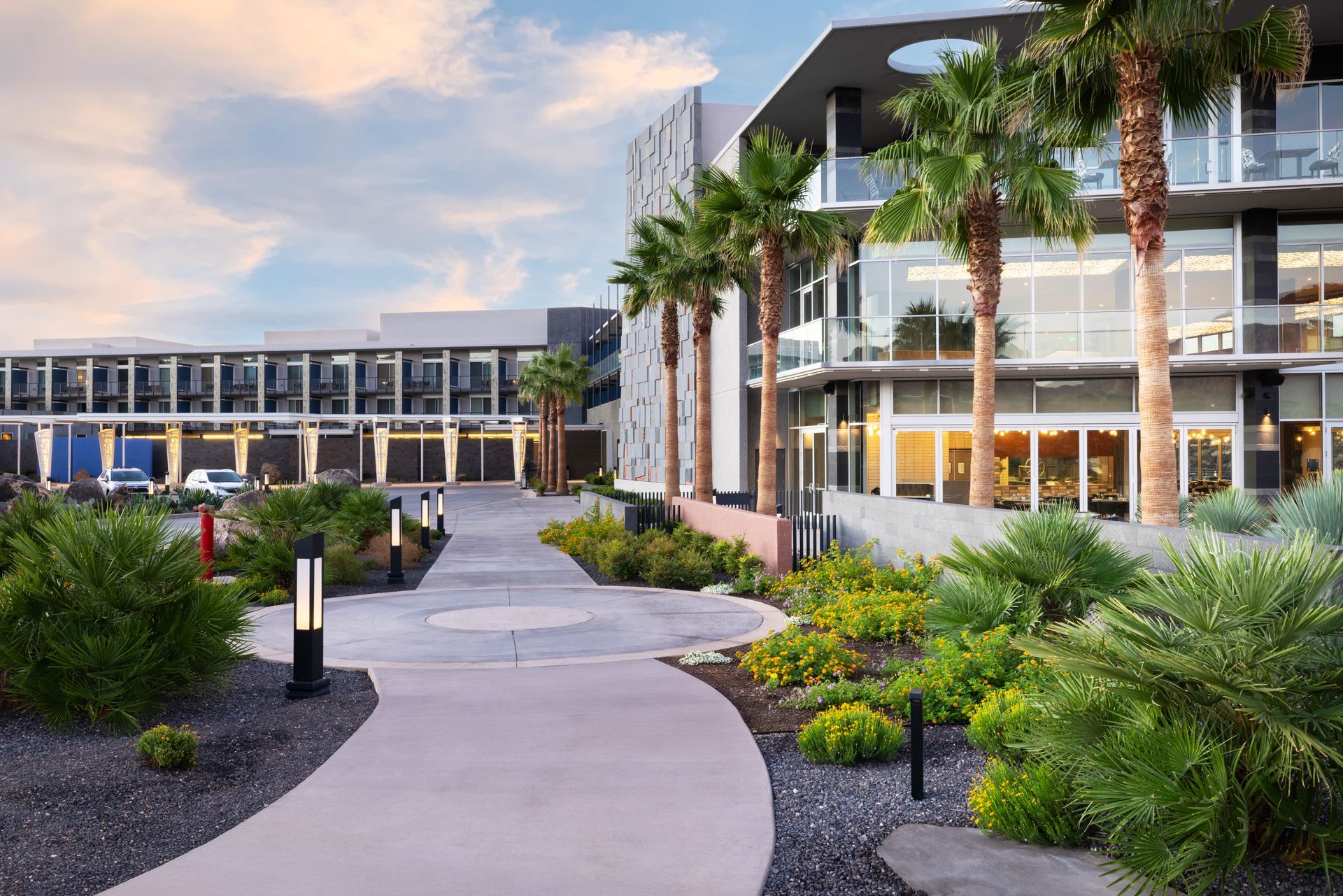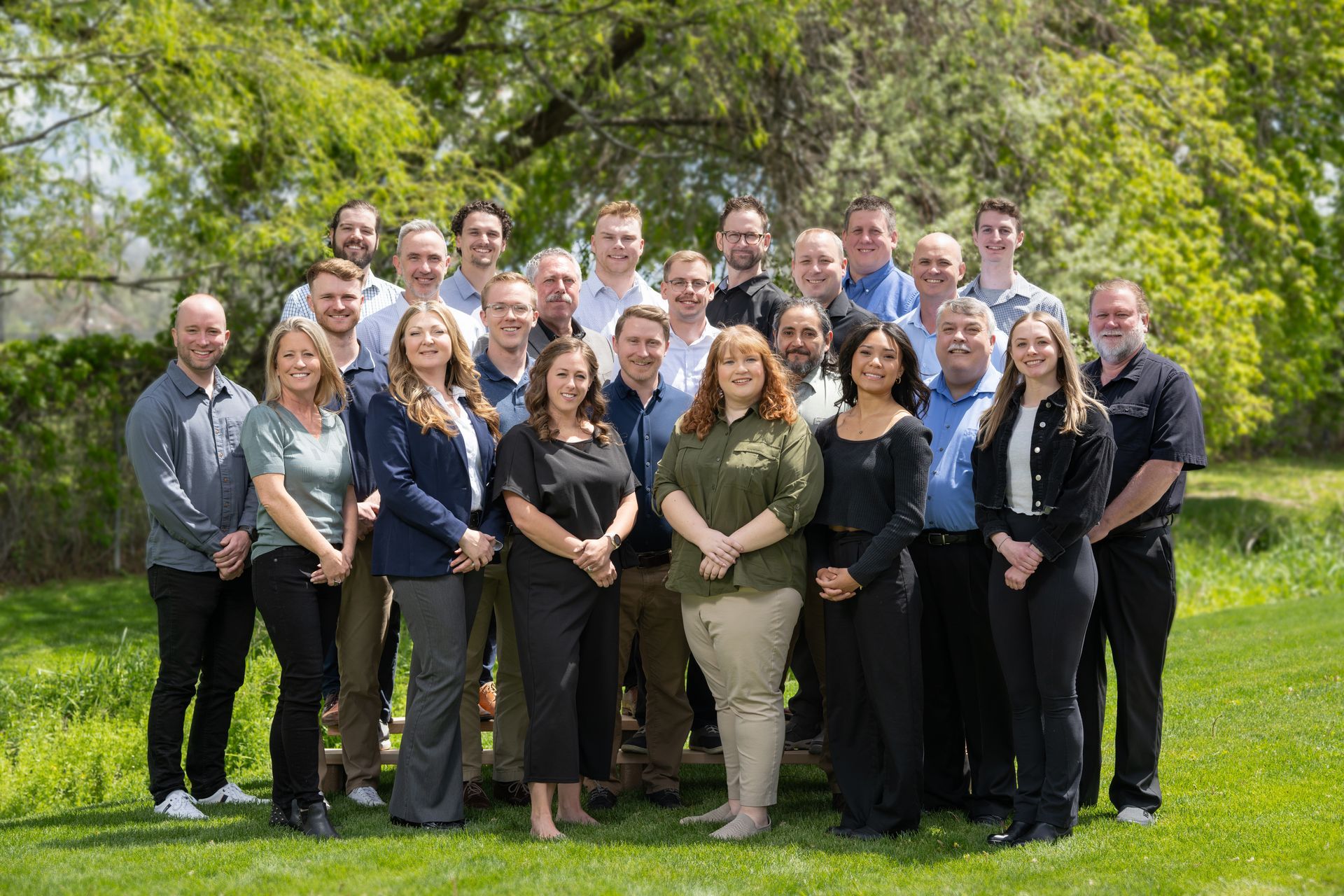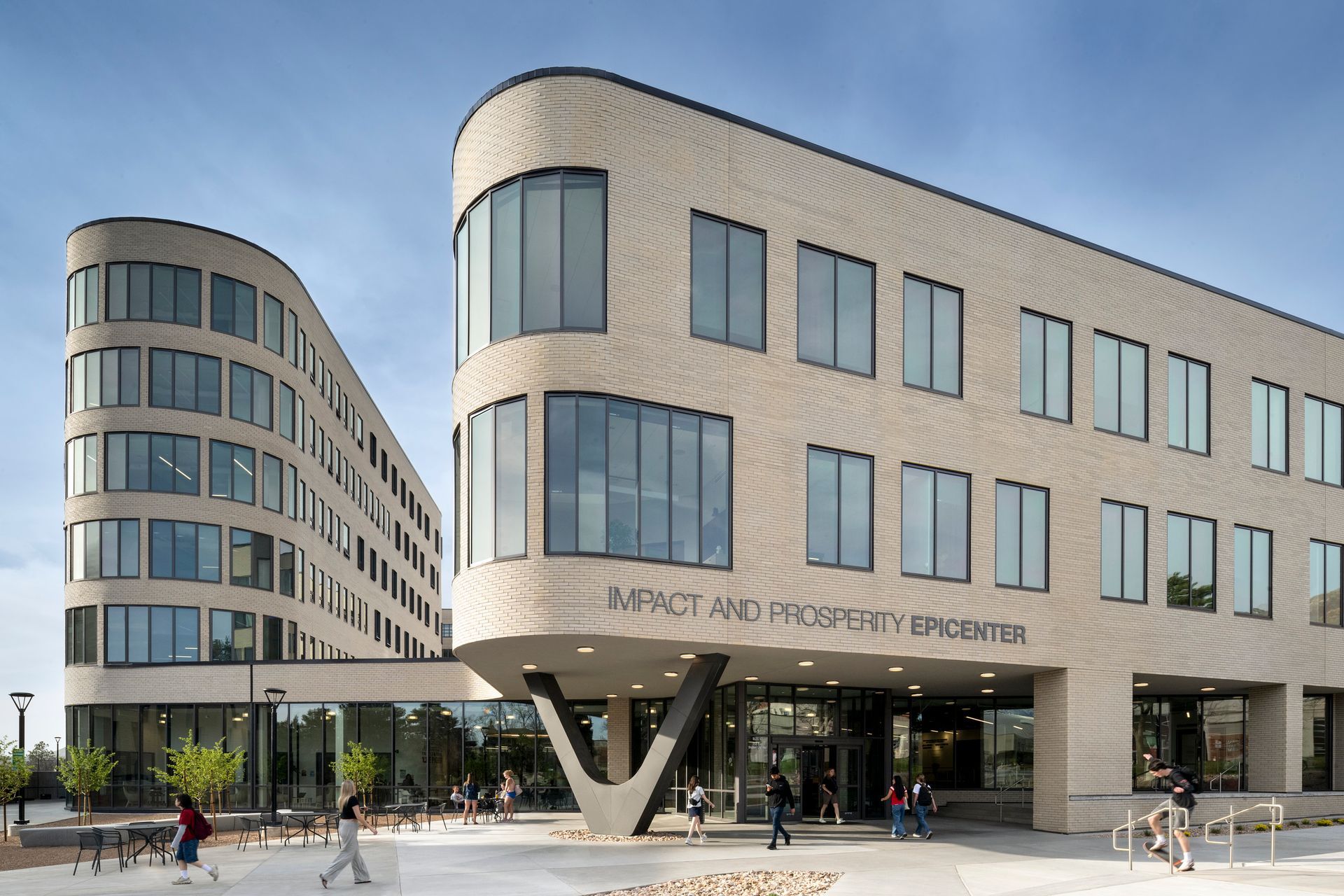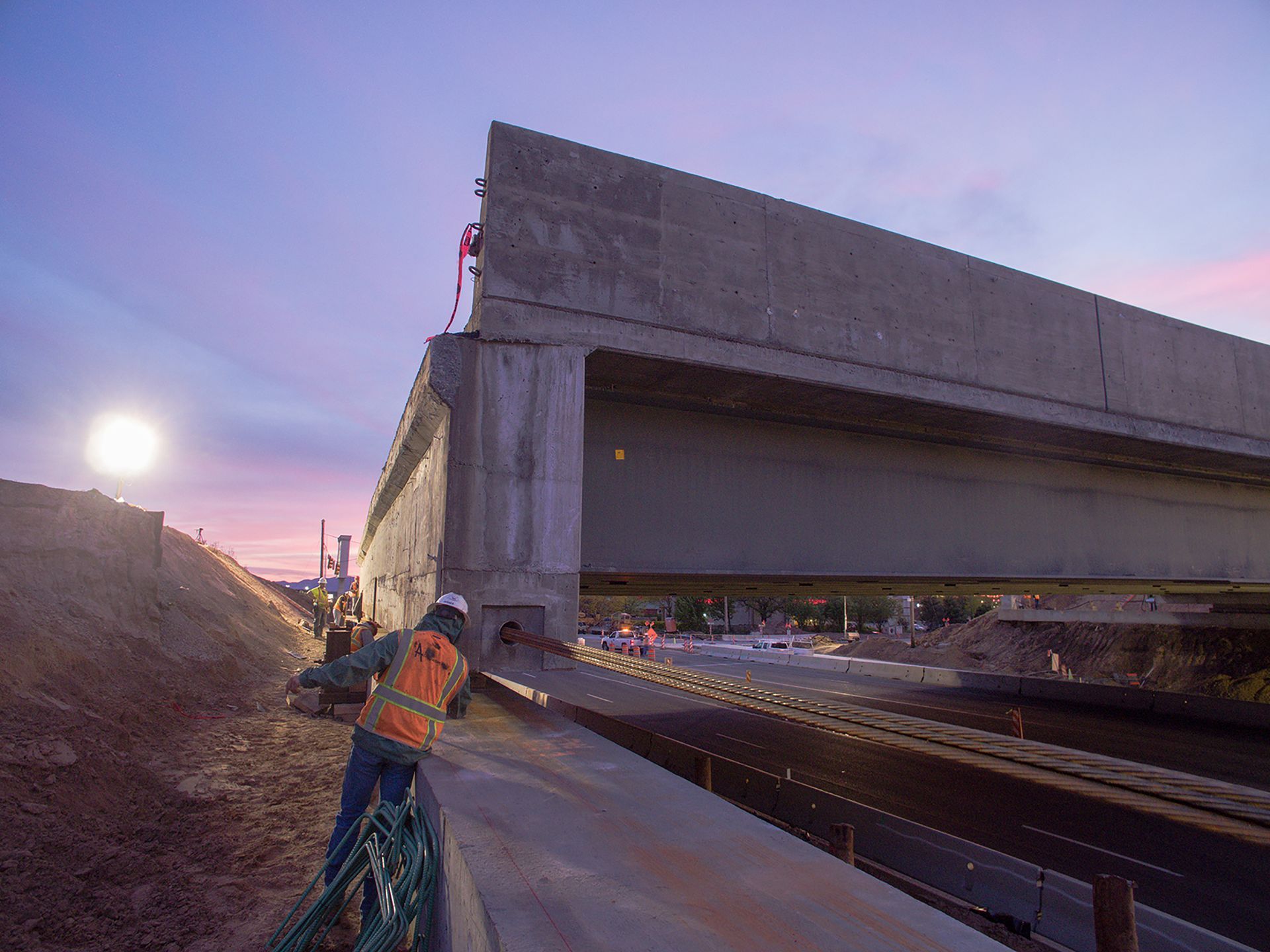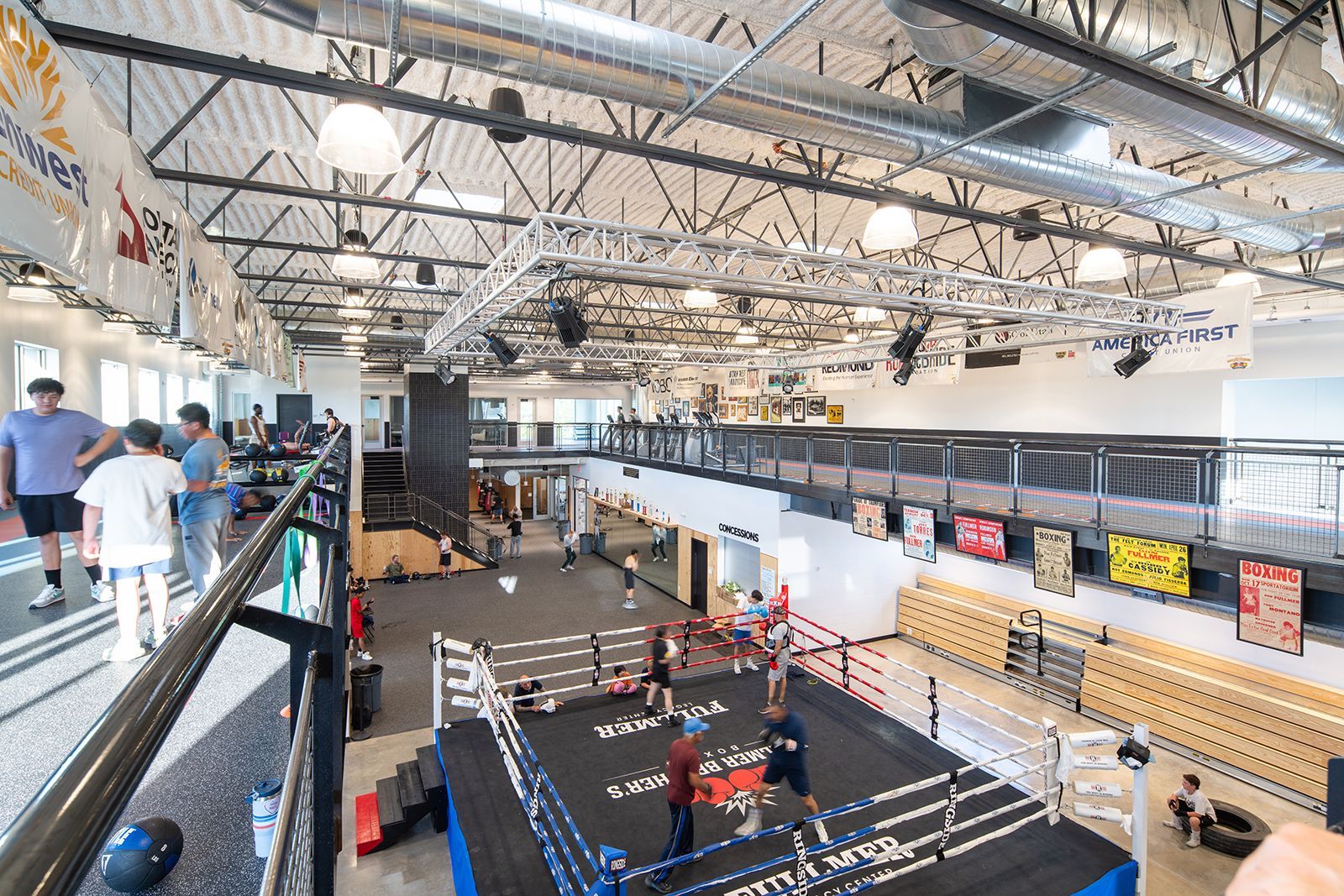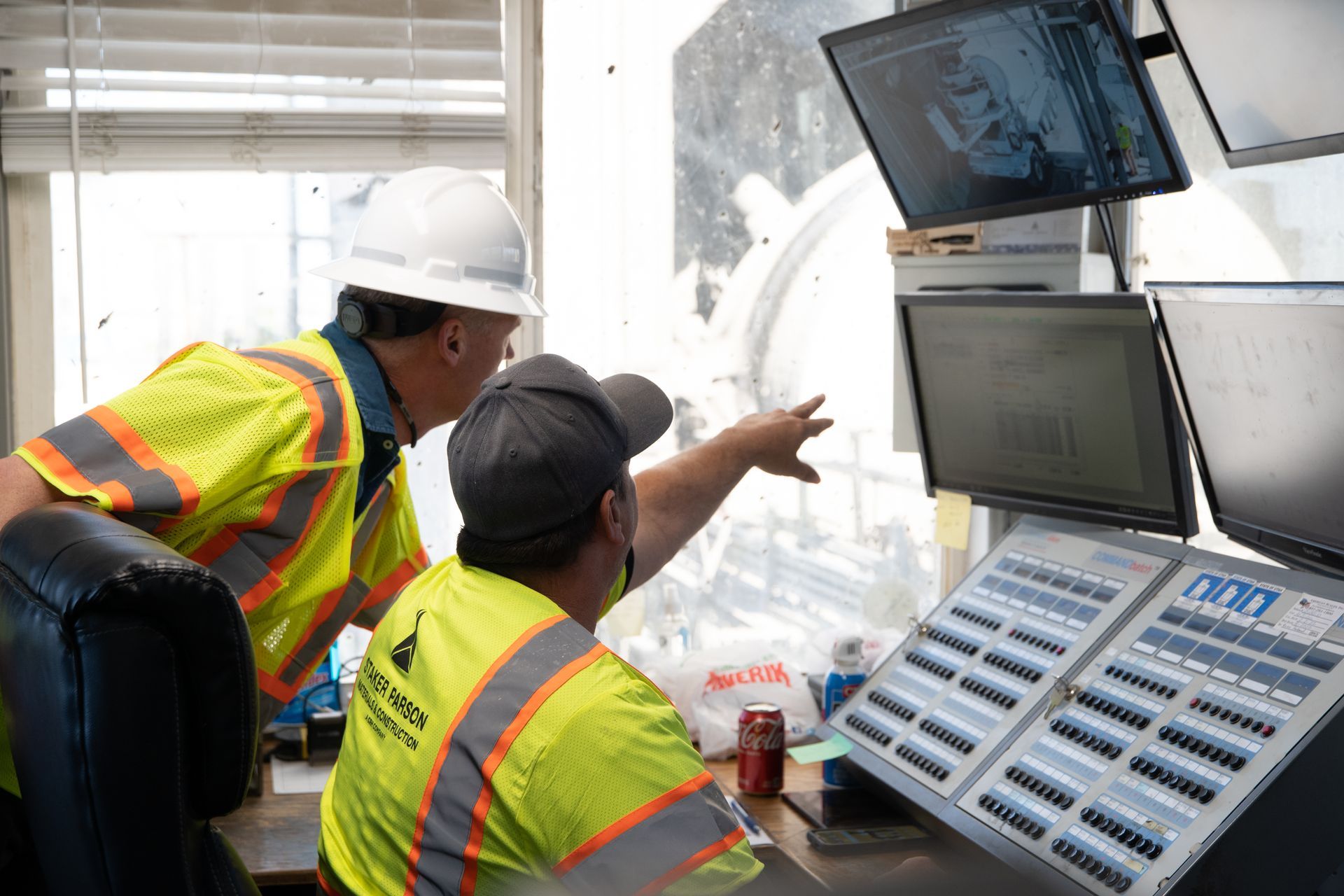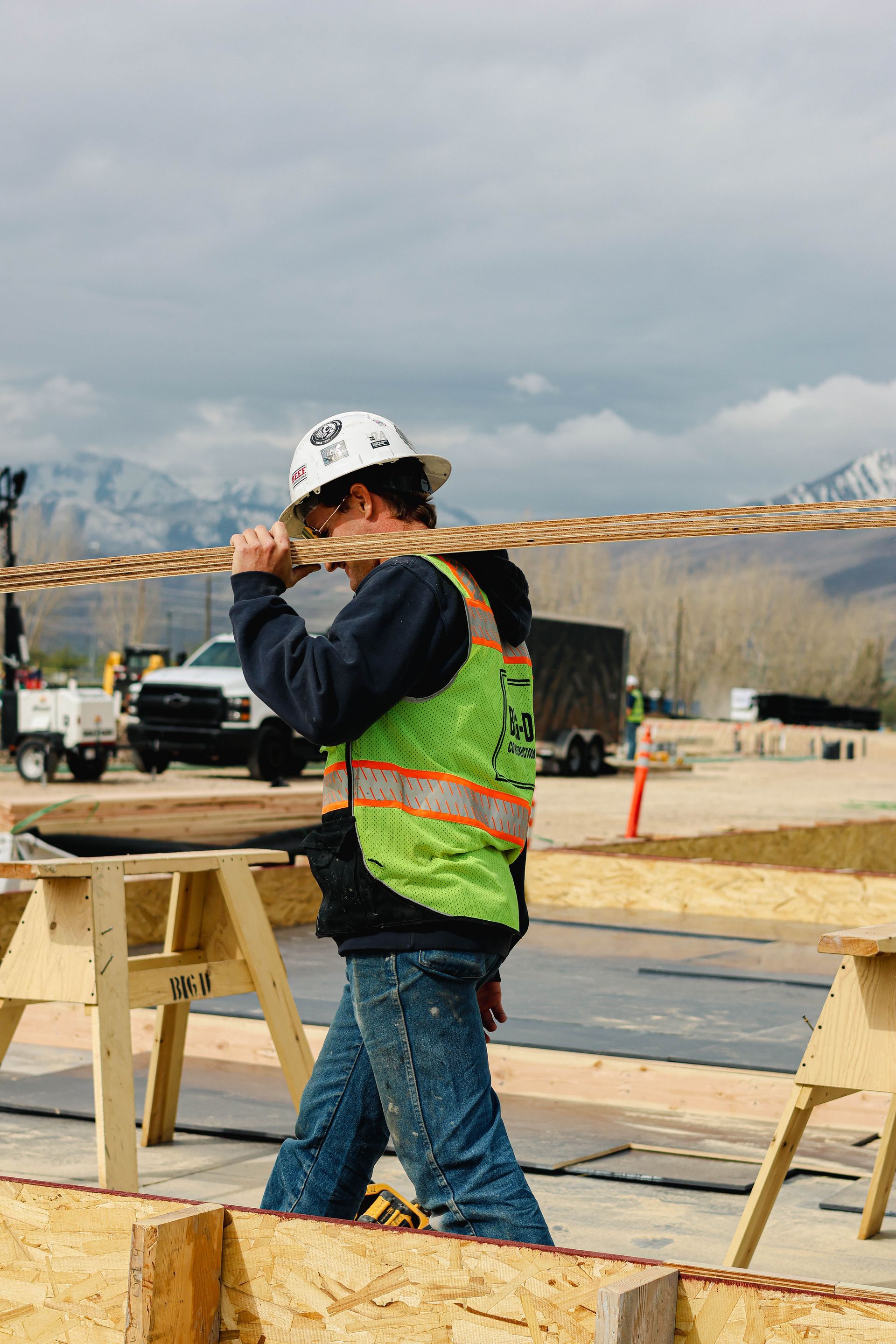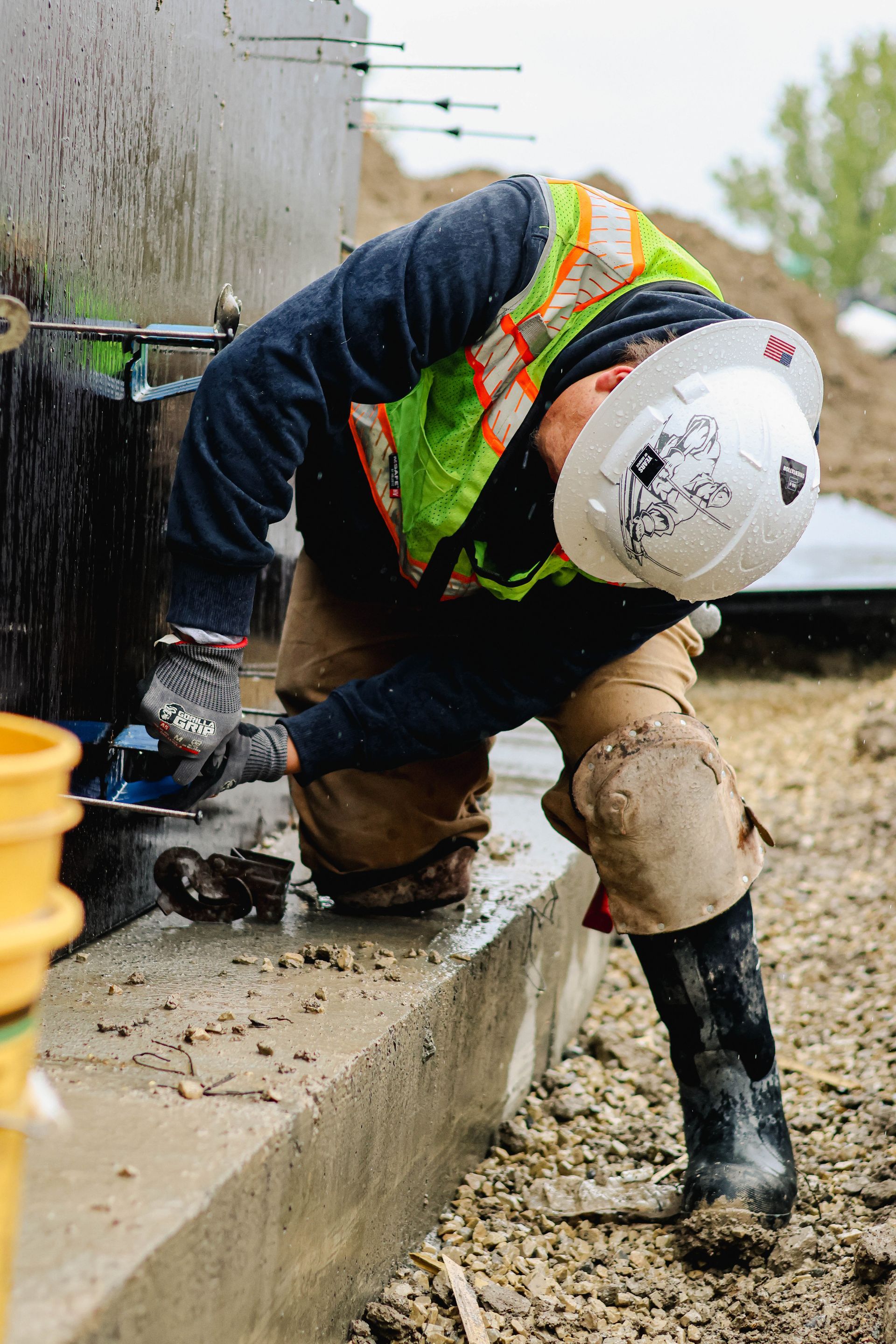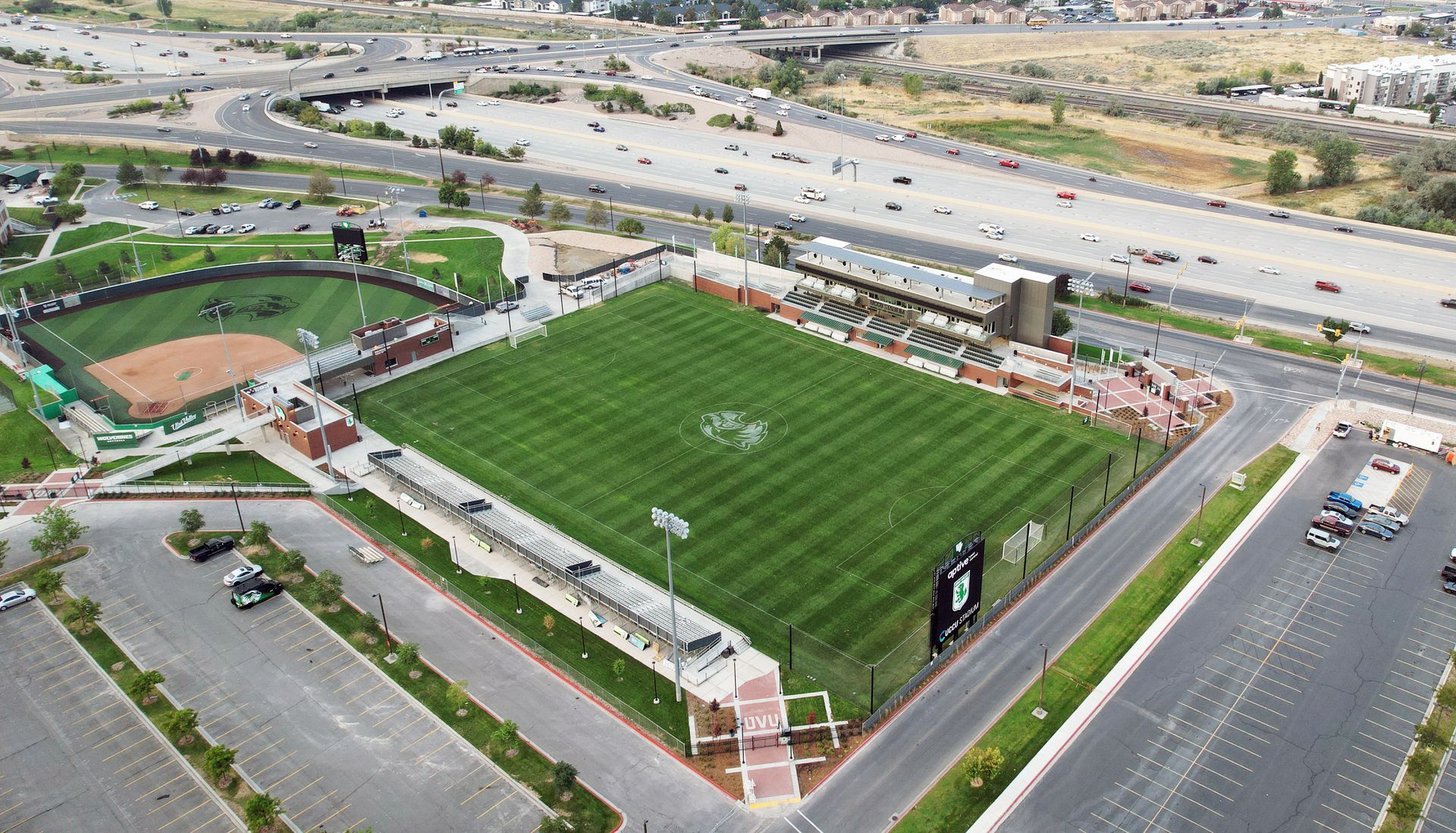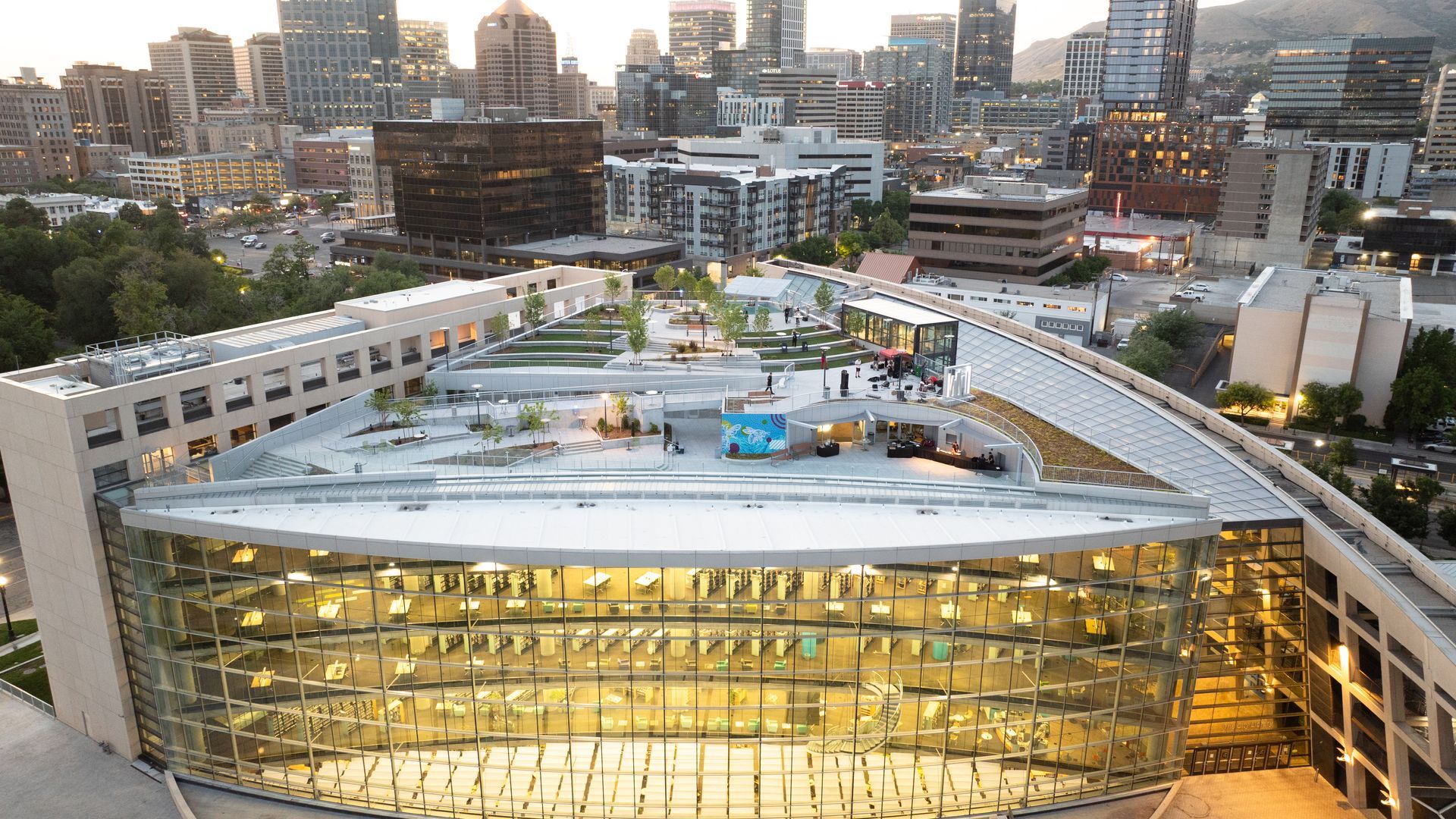Private, public, and association teams are coming together to bring more people into construction and the promising careers found in the industry. By Taylor Larsen
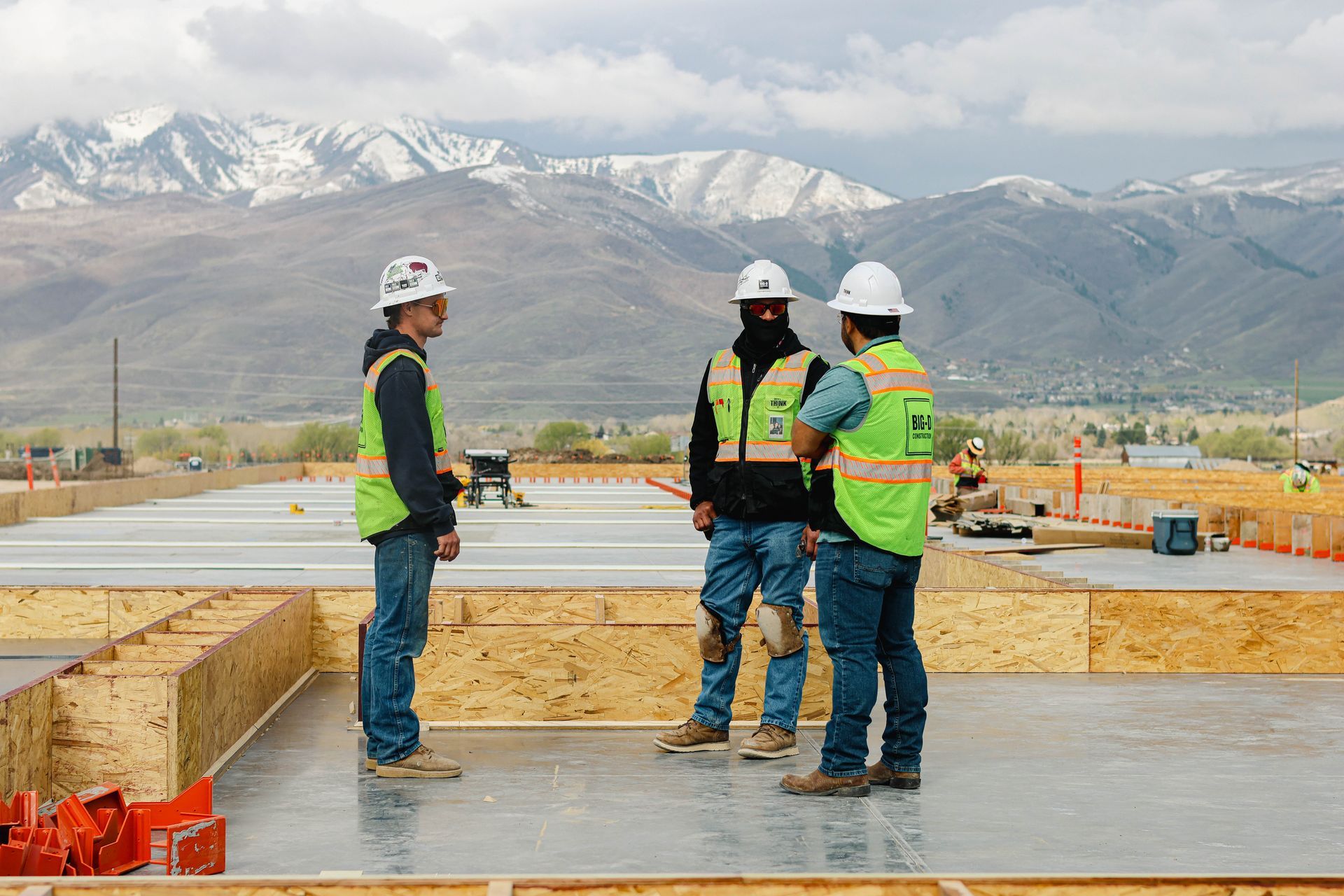
Success Across the Industry
Staker Parson Materials & Construction is another industry leader bringing young people into construction. Their program hosts 8-10 interns annually, where students gain hands-on learning in areas such as quality control, construction management, environmental services, finance, and more. Many who benefit from these professional development opportunities transition into a variety of full-time positions.
“The internship program at Staker Parson and its affiliated companies has been a cornerstone of workforce development for many years,” said Chris Ylincheta, who serves as Vice President of Staker Parson’s South Wasatch Companies. Since the company’s internship program began, it has grown into a more structured, learning-focused program designed to prepare students for long-term careers.
The program’s strength, Ylincheta continued, lies in its partnerships with schools, trade organizations like AGC and ABC of Utah, and community groups and nonprofits like Success in Education.
“From elementary school outreach through Staker Parson’s ‘Rocks Build Our World’ program to university-level collaborations with Weber State University and Utah State University,” Ylincheta said, “these relationships expand students’ perspectives and spark early interest in construction careers.”
In addition to offering these career pathways, Ylincheta said that Staker Parson also invests in education by donating materials, providing scholarships, and serving on boards to ensure the curriculum aligns with industry needs.
If it takes a village to raise a child, building the village “infrastructure” plays a monumental role in setting children up for an adulthood full of possibilities.
School Involvement
As Ylincheta alluded, the construction industry alone couldn’t solve the construction labor crisis. Many hands would be required to make light work in building a career development ecosystem where students could learn, grow, and succeed.
One strong set of hands comes from schools. Jamie Little, CTE Business Liaison for Granite School District. She helps students succeed in construction and other industries by giving them the “Pathway Promise”.
“We want students to have something they can use to support themselves when they finish the program,” Little said. Whether that is a pathway to future certification, concurrent enrollment credits toward college, or work experience that helps them succeed, Little and her teammates help pave a way forward.
The pathway begins at the elementary level and continues through high school, building connections and contact points with various industries. Students across the K-12 spectrum have Granite teams dedicated to these efforts. “The kids really get to know their work-based person from the time they are little.”
For those preparing for life after high school, “We go over what professional dress looks like, and we do mock interviews and resume prep,” Little said, noting how professional dress in construction—steel-toed boots and hard hats—is unique for the industry.
Little said that this work centers on setting expectations for students and giving them the chance to go. “If you give them the opportunity, they’ll rise to it.”
Melissa Goble, Jordan School District’s CTE Internship Instructor, said that this shift from the construction industry is most welcome for students looking for great career opportunities. “The kids are enthusiastic and want to get out there.”
Goble continued by saying that harnessing that energy and providing an early connection to the industry makes a huge difference in their career trajectories.
“These internships allow the students a chance to get to work and get to know their employers—and our students are prepared for it,” she said.
Goble and her team at Jordan School District work to prepare students for various workplace scenarios in class and through one-on-one mentorship. Using the educational setting as a platform for students to develop responsibility and personal accountability is a crucial aspect of career development.
“We’re making sure these are the types of students ready for these roles,” Goble said. The goal isn’t just a successful internship experience. “We’re making sure employers are getting students who are potential employees.”
We Build Utah Provides Major Lift
Annee Farner, Workforce Development Specialist at AGC of Utah, noted that the association’s We Build Utah program is another stakeholder committed to student success and career development, working to build relationships with students, companies, and CTE programs across 25 Utah school districts.
We Build Utah team members worked with the Utah Board of Education to help realign instruction and learning outcomes to best suit students of the 87 Utah high schools that offer construction classes. Early efforts from the Utah Architecture, Engineering & Construction Pathways (UAEC Pathways) program provided a solid foundation for this work to thrive.
Today, Farner said, high school students can enroll in a four-class series that begins with construction fundamentals, teaches trades-based math, safety, and tool use, and concludes with a capstone, one of which is an internship.
Seeds sown over the last few years are reaping incredible fruits at the high school and post-secondary levels. UAEC Pathways data from Northern Utah showed that participation is growing. While course enrollments totaled 4,654 in 2019/2020, enrollments set a record in 2023/2024 with over 17,000 total course enrollments.
Those enrollments are making a serious mark in professional development. In 2023/2024, 436 students earned certificates, 35 earned associate’s degrees, and 26 earned bachelor’s degrees from Weber State University.
Interns Join In
But what does it look like for the actual, boots-on-the-ground interns who have participated in these programs and joined as interns?
For Oswaldo Mandonado-Barron, it was a roller coaster—rickety at first, but thrilling as it moved along. He worked across multiple roles—estimating, project management, and building operations at Big-D’s headquarters in the iconic Fuller Paint Building, and field work at the Frank E. Moss Courthouse project.
He joked that Big-D Project Manager Mike Boyer earned his respect, and not just for bringing good food for lunch.
“He gave me a good overview on how to budget a job, how to overcome the struggles with the role, and the successes that come from being a good project manager,” said Mandonado-Barron. “I told myself, ‘I want to be like Mike.’ ”
Mandonado-Barron finished his first week at Salt Lake Community College in August as he works toward an associate’s degree while working full-time in Big-D’s concrete division. He plans to attend Weber State University in the future as he pursues his construction management degree.
Jesus Hernandez’s story is another example of internship success. He wanted to get into the construction industry and work for Big-D, just like his father and his brother, starting as a 17-year-old intern while finishing his final year at Granger High School.
“I wanted to see what this job was about,” he said. The schedule was intense—26-30 hours per week—but mentioned how supervisors accommodated his schedule to ensure schooling took priority, helping him graduate a semester early.
“Once I joined full-time, I learned what life is,” Hernandez laughed as he talked about the new expectations, new hours, and new truck that he recently purchased after saving up his wages.
While college may be in Hernandez’s future, he enjoys the learning environment in the field. As a Concrete Patcher, he has grown proficient in drilling, epoxying, and concrete mixes and earned certifications for boom lift, scissor lift, and forklift, as well as completing his OSHA 30 training—and perhaps a future as a foreman and superintendent.
Jon McMurry is one of Staker Parson’s many examples of internship success that began once he met company reps at a University of Utah career fair in 2024.
“I didn't have a clue what Staker Parson was or did, but the attitudes of Clay Packard and Brian Tayler, Estimating Managers with the company, intrigued me,” McMurray said. Beyond each representative’s knowledgeable and personable demeanor, “They took their time to explain what the company did and captured my curiosity.”
McMurry completed his internship, working for roughly eight months with a specific focus on civil infrastructure. Today, he serves as a Project Manager/Estimator, having stayed at Staker Parson due to the close-knit and friendly environment.
"Everyone was willing to extend a hand and pass on their wisdom to the new hire. The atmosphere is infectious and makes every day a joy to come to work.”
Continuing on the Path
The work to build on this pathway continues. Ylincheta said efforts to engage younger folks are changing the construction industry for the better.
“By showcasing the innovation, sustainability, and rewarding opportunities within the construction sector, the program not only develops talent, but also shifts outdated perceptions of the industry,” said Ylincheta, adding that he hopes to see others enter the fold to build a strong pipeline of future construction leaders.
Gallegos added to Ylincheta’s words, namely in how engaging with the human element of the industry has reaped incredible rewards.
“You look at some of the people [at Big-D], they followed this same path in some way—working in the field since they were kids or taking this first job,” Gallegos said. “We took what was naturally happening and paved a pathway.”
Many of those interviewed for this story mentioned how efforts to engage students at all ages form a truth that many in construction know well: a person’s first job usually comes from someone they know. If the construction industry continues to connect with students from a young age, that relationship could bring that student—steel-toed boots, hard-hat, safety vest, and all—into an industry ready to build them up.
